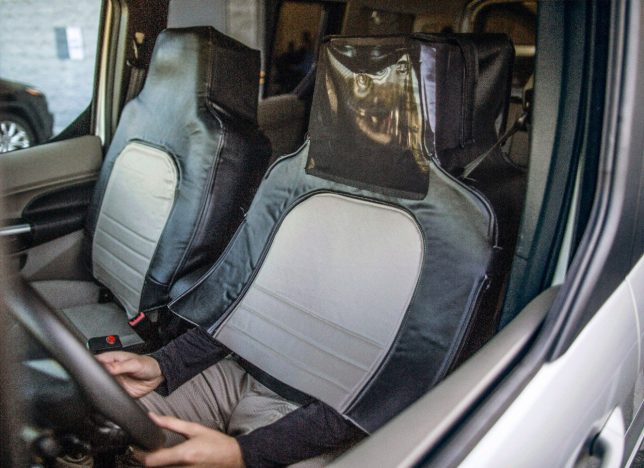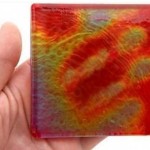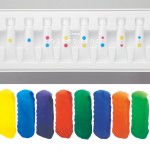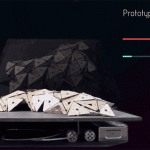[ By SA Rogers in Technology & Vehicles & Mods. ]

A Ford van zooming around the Washington D.C. area last month, seemingly without a human in the driver’s seat, wasn’t self-driving after all: it was a man in a ‘seat suit.’ A fake driverless car might seem like a weird experiment, especially considering the fact that there’s an entire fake town for testing self-driving vehicles at Ford’s disposal. But as it turns out, they have their reasons: observing how people react to seeing it. While Virginia Tech has already been testing autonomous vehicles in the area, they’re still using human overseers to take over the wheel in case something goes wrong.

In the video above, a few people muse aloud, “Is that a self-driving car?” Slow-motion shots show the vehicle passing by with a seemingly empty driver’s seat. But the fact that there’s a man camouflaged as a car seat is almost more interesting, anyway. After learning of the stunt, Adam Tuss of NBC Washington followed the car around until he could pull up next to it at a red light and get a shot of the interior, revealing the driver’s hands and legs. “Brother, who are you?” he asks in the video. “What are you doing? I’m with the news, dude.”
This is one of the strangest things I've ever seen @nbcwashington @ARLnowDOTcom pic.twitter.com/8ipKEnkeiq
— Adam Tuss (@AdamTuss) August 7, 2017
John Shutko, a Ford self-driving researcher, divulges some answers in a piece on Medium.

“We’re teamed up with [Virginia Tech] to test our communications method and to explore how pedestrians and bicyclists react to self-driving vehicles with no human in the driver’s seat. Of course, we do need someone in the seat right now, so we dressed a human up in a seat suit to make it appear as though there was nobody inside our simulated self-driving Ford Transit Connect. This seat suit allowed us to collect real-world reactions to an autonomous vehicle driving on miles of public roads in northern Virginia, without actually using an autonomous vehicle.”

Six different drivers wore the suit throughout August, reporting that they started out on a test track before moving onto the streets, and that the suit was definitely uncomfortable.




[ By SA Rogers in Technology & Vehicles & Mods. ]
[ WebUrbanist | Archives | Galleries | Privacy | TOS ]

















You must be logged in to post a comment.